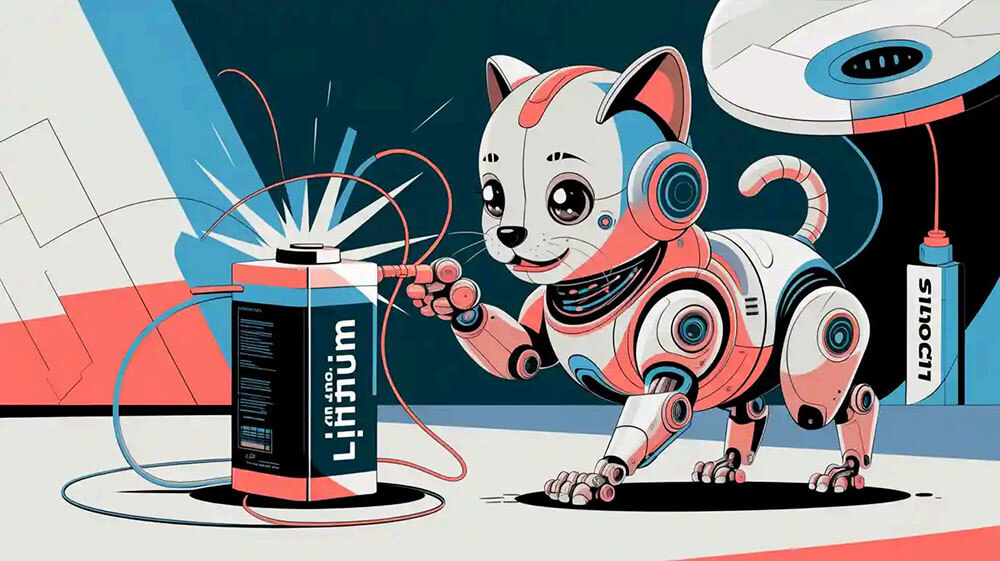Contents
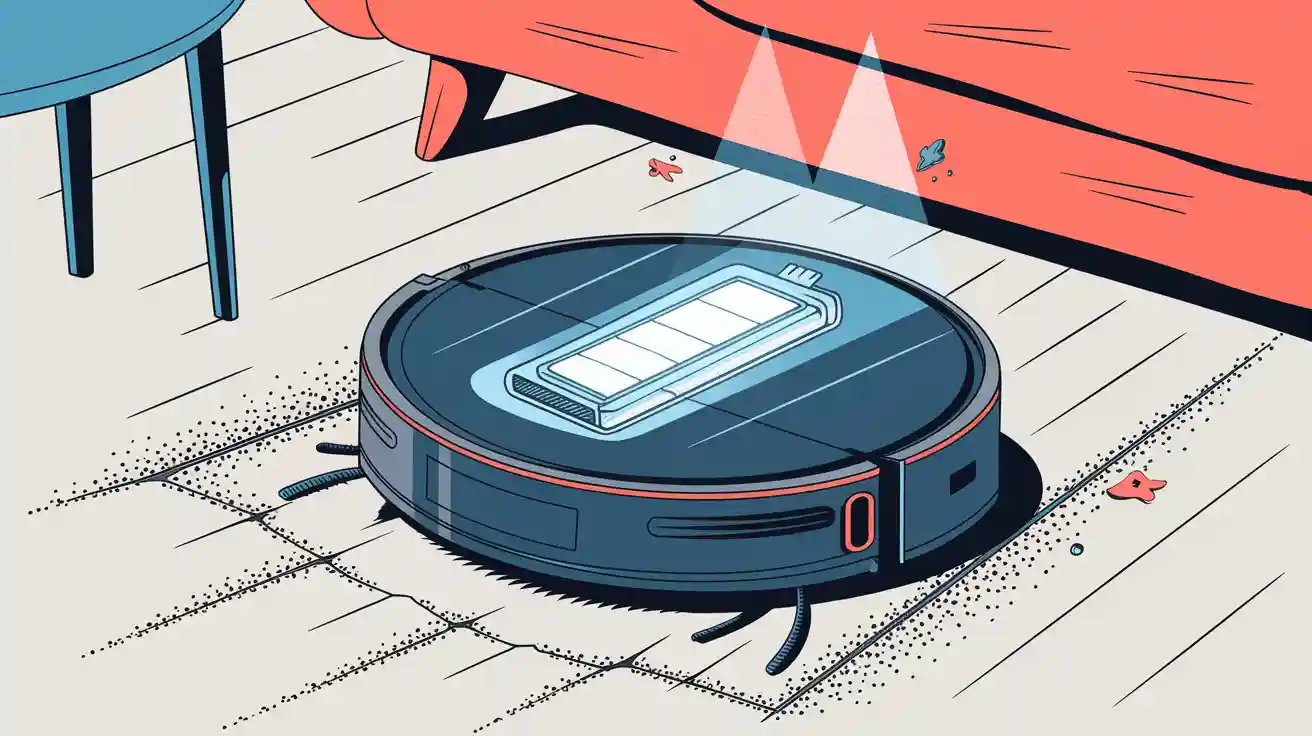
Lithium batteries for robot vacuum cleaners revolutionize how these devices achieve peak performance. Their high energy density allows for extended cleaning sessions without frequent interruptions. Recent advancements in lithium battery technology have significantly improved cleaning efficiency. For example:
The global lithium battery for robot vacuum market is projected to grow at a 10.5% CAGR from 2024 to 2032, driven by demand for efficient cleaning solutions.
Enhanced battery life and faster charging reduce operational downtime.
These lithium batteries also lower maintenance costs. Their lightweight design improves mobility, while their long battery lifespan minimizes replacements. To maximize performance, proper care, such as avoiding overcharging, is crucial.
By adopting lithium batteries for robot vacuum cleaners, you can transform your floor cleaning robots into efficient, cost-effective tools.
Key Takeaways
Lithium batteries help robot vacuums clean longer and charge faster. This means less waiting time.
Taking care of the battery, like not overcharging it, makes it last longer and work better.
Using chargers made by the company keeps it safe and working well. It also avoids damage and keeps the warranty valid.
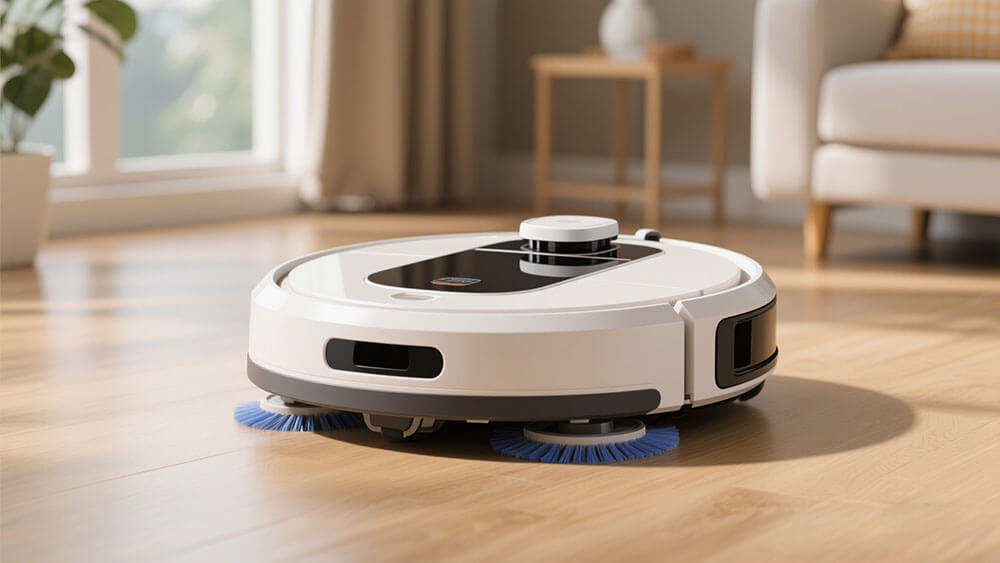
Part 1: Why Lithium Batteries Are Ideal for Robot Vacuums
1.1 High Energy Density for Extended Cleaning Sessions
Lithium batteries stand out due to their high energy density, which directly enhances the cleaning efficiency of robot vacuums. This feature allows your robotic vacuum cleaners to operate for extended periods without frequent interruptions. Compared to traditional batteries, lithium-ion batteries deliver up to 30% more efficiency, enabling longer cleaning sessions.
This extended runtime is particularly beneficial for large spaces, such as warehouses or commercial facilities, where uninterrupted cleaning is essential. By equipping your robot vacuum cleaner with a lithium battery, you can optimize performance and reduce the need for manual intervention.
Tip: To maximize the battery lifespan, avoid over-discharging the battery during extended cleaning sessions.
1.2 Faster Charging for Reduced Downtime
Time is a critical factor in maintaining operational efficiency. Lithium batteries for robotic vacuum cleaners excel in this area by offering significantly faster charging times compared to conventional batteries. For instance:
A lithium battery can charge in as little as three minutes.
After charging, the robot vacuum can operate for 30 minutes.
This reduces the ratio of charging time to cleaning time, improving overall efficiency.
Quick charging minimizes downtime, ensuring your robotic vacuum cleaners are ready to tackle cleaning tasks promptly. This feature is especially advantageous in industries like logistics and healthcare, where maintaining a clean environment is crucial.
1.3 Lightweight Design for Improved Mobility and Efficiency
The lightweight nature of lithium batteries enhances the mobility and efficiency of robot vacuums. A lighter battery reduces the overall weight of the device, allowing it to navigate more easily across various surfaces. This improved mobility translates to better cleaning coverage and less strain on the vacuum’s motor, ultimately extending its lifespan.
Additionally, the reduced weight contributes to energy efficiency. The robot vacuum requires less power to move, which conserves battery life and ensures peak performance during cleaning cycles. This design advantage makes lithium batteries an ideal choice for modern robotic vacuum cleaners.
1.4 Longer Lifespan for Cost-Effective Maintenance
Lithium batteries offer a significantly longer lifespan compared to traditional battery types. Research from Fudan University highlights a novel repair technology that extends the cycle life of lithium batteries by 2.3 times. This innovation not only reduces replacement costs but also supports sustainable practices by minimizing waste.
The extended battery lifespan ensures that your robot vacuum battery remains functional for years, reducing the frequency of replacements. This cost-effective solution is particularly valuable for businesses aiming to lower operational expenses while maintaining high cleaning standards.
Note: Always use manufacturer-approved chargers to preserve the battery’s longevity and ensure safe operation.
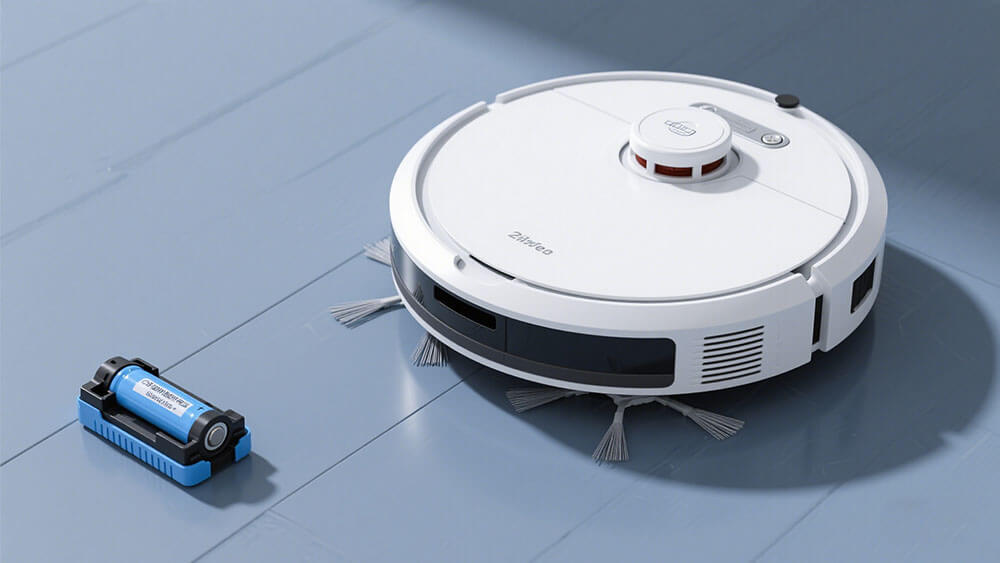
Part 2: Identifying and Resolving Robot Vacuum Battery Issues
2.1 Recognizing Signs of Battery Degradation
Over time, even the most advanced lithium battery in a robot vacuum can experience wear and tear. Recognizing early signs of battery degradation is crucial for maintaining peak performance. Here are some common indicators:
Reduced Runtime: If your robot vacuum operates for shorter periods despite a full charge, the battery may be losing capacity.
Longer Charging Times: A noticeable increase in charging duration often signals internal resistance buildup within the battery.
Overheating During Operation or Charging: Excessive heat can indicate chemical instability or aging components in the lithium battery.
Inconsistent Performance: If your robot vacuum cleaner frequently stops mid-cycle or fails to complete cleaning tasks, the battery might be struggling to deliver consistent power.
Tip: Regularly monitor your robot vacuum’s runtime and charging behavior. Early detection of these issues can prevent costly repairs or replacements.
2.2 Testing the Health of Lithium Batteries
Testing the health of your robot vacuum battery ensures it operates efficiently. You can use the following methods to assess its condition:
Voltage Testing: Use a multimeter to measure the battery’s voltage. A healthy lithium battery typically maintains a stable voltage within its specified range.
Capacity Testing: Specialized battery testers can measure the battery’s capacity in milliampere-hours (mAh). Compare the results to the manufacturer’s specifications to determine if the battery has degraded.
Cycle Count Analysis: Lithium batteries have a limited number of charge-discharge cycles. Check the cycle count using diagnostic tools provided by the robot vacuum manufacturer.
Testing Method | Purpose | Tools Required |
|---|---|---|
Voltage Testing | Measures voltage stability | Multimeter |
Capacity Testing | Assesses remaining capacity | Battery tester |
Cycle Count Analysis | Tracks charge-discharge cycles | Diagnostic software |
Note: Always follow the manufacturer’s guidelines when testing your lithium battery to avoid damage or inaccurate results.
2.3 Troubleshooting Common Charging Problems
Charging issues are among the most common battery problems faced by robotic vacuum cleaners. Addressing these problems promptly can restore your device’s performance. Here are some troubleshooting steps:
Check the Charger: Ensure the charger is functioning correctly. Use a multimeter to verify the output voltage matches the specifications.
Inspect the Charging Contacts: Dirty or corroded contacts can disrupt the charging process. Clean them with a soft cloth and isopropyl alcohol.
Reset the Robot Vacuum: Sometimes, a simple reset can resolve software glitches affecting the charging system.
Replace the Battery: If the lithium battery fails to hold a charge despite troubleshooting, it may need replacement. Always opt for manufacturer-approved batteries to ensure compatibility and safety.
Alert: Avoid using third-party chargers or batteries, as they can damage your robot vacuum and void the warranty.
By addressing these common battery issues, you can extend the lifespan of your robot vacuum cleaner and maintain its cleaning efficiency. For customized battery solutions tailored to your needs, consider consulting Large Power’s experts.
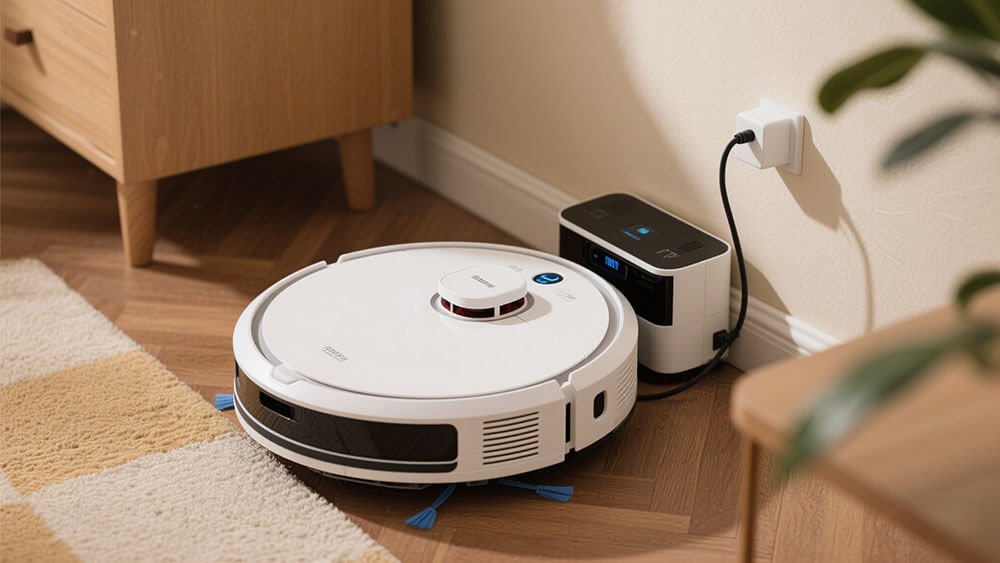
Part 3: Best Practices for Maintaining Lithium Battery Performance
3.1 Proper Charging Habits to Extend Battery Life
Adopting proper charging habits is essential for optimizing the performance and lifespan of your lithium battery. To ensure your robot vacuum cleaner operates efficiently, follow these best practices:
Allow the battery to fully charge and discharge periodically. This helps maintain its health and capacity.
Let the robot vacuum dock itself to ensure proper alignment with the charging station. Misalignment can lead to inefficient charging.
Avoid manually pushing the robot vacuum to its dock. Poor contact between the charging pins and the station can reduce charging efficiency.
By keeping it charged correctly, you can extend the battery life and reduce the need for frequent replacements.
Tip: Always monitor the charging process to prevent overcharging, which can degrade the battery over time.
3.2 Avoiding Over-Discharge and Overcharging
Over-discharging and overcharging are two common issues that can significantly impact the lifespan of your lithium battery. To avoid these problems:
Recharge the battery before it drops below 20% capacity. Deep discharges can cause irreversible damage to the battery cells.
Use chargers with built-in overcharge protection to prevent the battery from exceeding its maximum charge level.
These precautions not only protect the battery but also ensure consistent performance from your robotic vacuum cleaners.
3.3 Storing Lithium Batteries in Optimal Conditions
Proper storage conditions play a crucial role in maintaining the efficiency of your robot vacuum battery. When storing lithium batteries, adhere to the following guidelines:
Storage Condition | Recommendation |
|---|---|
Charge Level | 40%~60% |
Optimal Temperature | 23±2°C |
Optimal Humidity | 60±15% |
Storage Frequency | Charge at least once every six months |
Maintaining these conditions prevents battery degradation and ensures it remains ready for use when needed.
Note: Avoid exposing the battery to extreme temperatures or high humidity, as these can accelerate wear and tear.
3.4 Using Manufacturer-Approved Chargers and Accessories
Using chargers and accessories approved by the manufacturer is critical for the safety and longevity of your lithium battery. Third-party chargers may not meet the required specifications, leading to potential damage or reduced performance.
Manufacturer-approved chargers are designed to optimize battery performance while ensuring safe operation. They also help maintain the warranty of your robot vacuum cleaner.
Alert: Always verify the compatibility of chargers and accessories before use to avoid voiding the warranty or causing harm to the battery.
By following these best practices, you can optimize battery performance, extend its lifespan, and reduce maintenance costs for your robot vacuum. For customized battery solutions tailored to your needs, consult Large Power’s experts.
Lithium batteries for robotic vacuum cleaners have revolutionized cleaning efficiency and cost management. Their lightweight design, longer lifespan, and consistent performance ensure uninterrupted cleaning cycles. Features like extended runtime and faster charging reduce downtime, making them ideal for industrial and commercial applications. Proper care, such as keeping it charged and avoiding over-discharge, maximizes battery health.
Adopting lithium battery technology not only enhances the performance of your robot vacuum cleaner but also lowers long-term maintenance costs. Businesses can benefit from reduced replacements and improved operational efficiency. Explore customized lithium battery solutions to optimize your robotic vacuum cleaners and achieve sustainable cleaning goals.
Consult Large Power for tailored solutions.
FAQ
1. What makes lithium batteries better than traditional batteries for a robot vacuum?
Lithium batteries provide higher energy density, faster charging, and longer lifespan. These features enhance your robot vacuum’s cleaning efficiency and reduce maintenance costs.
2. How often should you replace a robot vacuum’s lithium battery?
Replace the battery every 2-3 years or when you notice reduced runtime, longer charging times, or inconsistent performance. Consult Large Power for tailored solutions.
3. Can you use third-party chargers for your robot vacuum’s lithium battery?
Avoid third-party chargers. They may not meet safety standards, potentially damaging the battery or voiding the warranty.



